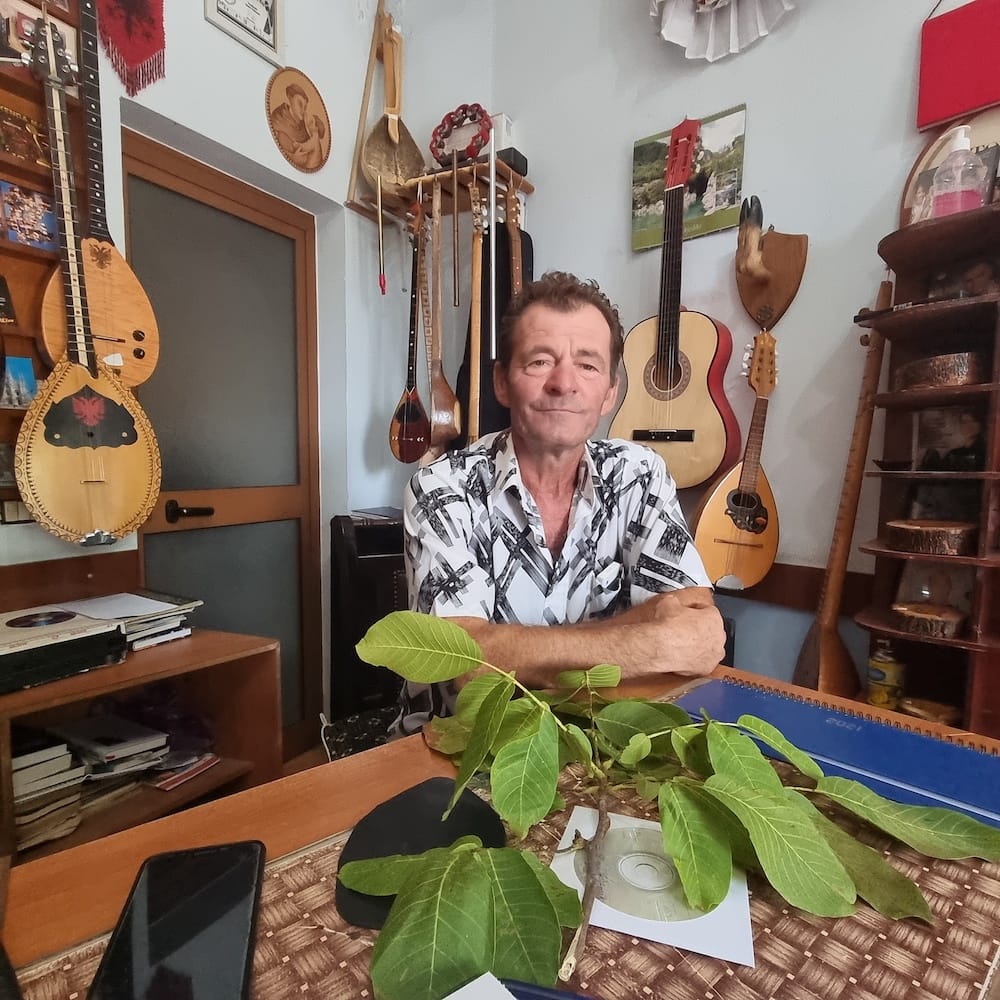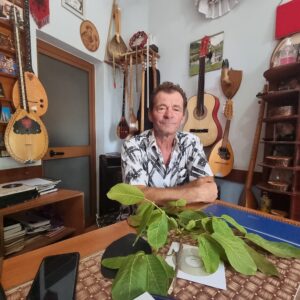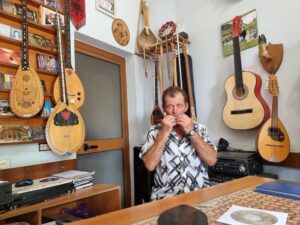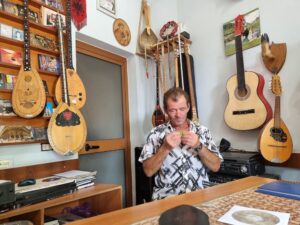The leaf music falls in the rich genre of aerophone instruments. The leaf produces the melody from the vibration of air. This musical instrument is called “picanga”. Picanga-s can be made from broad and thick grass blades, with wet corn sharp-pointed leaves upright inserted between two thumbs. The sound is produced by blowing air across the pointed tip of “picanga”. Even leaves of other trees can be used for picanga. Some villagers fold the leaf in two or roll it to form a semi-circle, put the leaf into their mouth and squeak on it by producing a variety of tweeting sounds. Some folk masters know how to make all sorts whatsoever of sounds from leaves of different species, such as beech, hornbeam, and walnut, by holding the leaf across the edges and keeping it evenly rigid, then blowing air across its pointed tip. The sound pitch changes according to the leaf tension and according to the blowing pressure. The shermashek leaf (English ivy) was once used as one of the instrumental tools of Shkodran aheng. Today, the leaf is used mainly in the northern and northeastern highlands.
In Dukagjini province, the tree leaf, or as otherwise known lepushtra, has had a long traditional history as an instrument, accompanying the shepherd tune songs, highland songs, solo folk dances by flute, lahutë or zymare. In music, this exquisite musical instrument falls in the family of wind instruments.
The walnut leaf or beech leaf is usually good for instruments, typically a non-serrated, linear, and common leaf.
A distinct feature of this natural reed instrument is its sound which cannot be mimicked by any other instrument. In addition to song motifs, leaf music has also mimicked various types of birds tweeting. Another feature is that it does not have a special register like other instruments, including zymare, flute, or lahuta, so it allows one to play in any kind of musical register.




